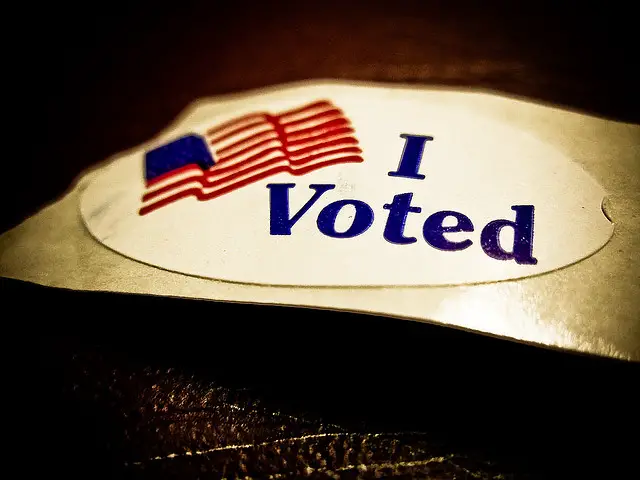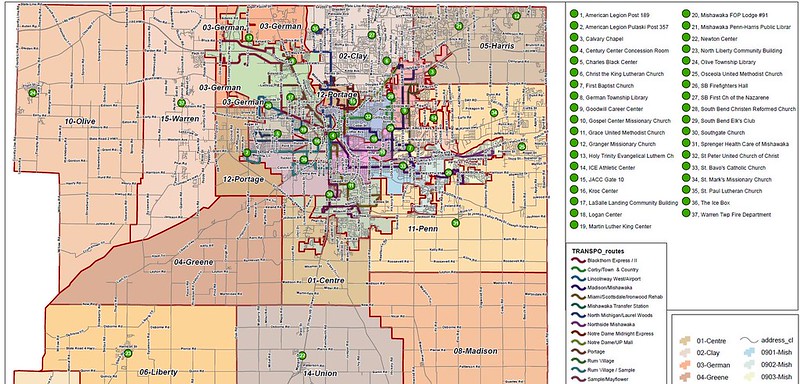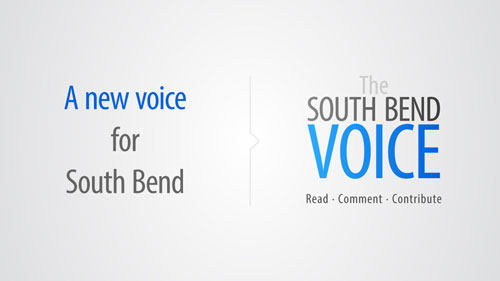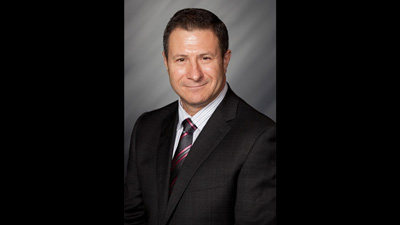Election Day is a little over two months away. Television ads are already running, signs are going up in yards across the region, and voters are beginning to consider their choices for the upcoming election. Voters will have their chance to cast ballots for local, state and Congressional races, including a highly publicized race between Representative Jackie Walorski and Joe Bock.
One thing that will not be a part of this year’s elections are vote centers, at least in St. Joseph County. The county had hoped to have them in place in time for the 2014 elections but those plans have been pushed back. However, vote centers are coming beginning next year (pending final approval).
South Bend Voice has done an extensive amount of research and talked to various sources about vote centers. Here is all of the relevant information that you need to know to be prepared for the big changes that are coming our way in the 2015 and 2016 elections.
What are vote centers?
Vote centers are polling locations within St. Joseph County where any registered county resident can vote. The idea is to eliminate the need to have a set polling location at a local precinct. Instead, voters can vote at any of forty different locations throughout the county.
The concept began in Larimer County, Colorado in 2003 and was piloted in Cass, Tippecanoe and Wayne Counties in Indiana from 2007 until 2010. The state legislature approved a plan that made vote centers an option for Indiana counties. It has since been adopted in 18 Indiana counties, including Elkhart.
Why is St. Joseph County adopting this model?
There are two main reasons: convenience and money. Vote centers give voters options about where to vote. They may vote near work, or while checking out a book at the library. The plan calls for 19 early voting centers distributed across the county and 40 Election Day sites (although only 37 have been announced so far).
“It’s actually going to be faster and easier,” the Vote Center Committee’s chairman, Karl King, told South Bend Voice.
The county also expects to spend less money on poll workers, since it will be reducing the number of Election Day sites from 154 to only 40. On the plus side, the county will have 18 early voting sites compared to the 2 that were used in past elections.
How does a vote center work?
Similar to the way you vote now, except you have more locations where you can cast your ballot. Once at the polling place, you provide a form of photo ID (such as a driver’s license, passport or state ID) as required by state law. A poll worker will scan your driver’s license and see the signature that you have on file with the BMV. You will be asked to provide your signature, and the poll worker will compare your signature with the one that they have on file.
Each vote center is connected via the Internet. Internet connectivity will allow election officials to see in real-time where voters are voting. If a particular location is slow and another is unusually busy, they can respond by sending one or more polling booths to the busier vote center. This also acts to increase the integrity of the election, since all of the vote centers will be communicating with each other. Once a voter casts a ballot, they will not be able to go to another location and vote a second time.
What are the drawbacks?
The initial upfront cost (which is mitigated with long-term savings) and potentially making polling locations further away for some county residents. There is a concern that low-income and voters without automobiles will have a more difficult time voting with fewer Election Day poll locations.
“There were people on the committee who thought we might be making it more difficult for people to vote,” King said. “By the end of our discussion, the people who were most concerned said ‘I’m good with this’ because now people have not just one place to vote — but within walking distance of their house — people have two or three.”
Will I wait in line longer?
Probably not. Election Day vote centers will have ten voting machines and four pollbooks (the place where you sign in). Early voting locations will have two pollbooks and two voting machines.
What are the hours and locations of the vote centers?
For a full list of hours and locations, see the vote center plan at the bottom of the page (PDF). Here is a map of the Election Day vote center sites. Early voting sites will be different. Please see the vote center plan at the bottom of the page for early voting sites.
Some early locations have different hours and days than other locations. For instance, King explained that the library’s schedule in 2015 did not allow them to hold it for longer than 8 days. He said that it will likely change in 2016.
King said that the committee not only wanted polling sites close to people’s homes but also near major places of work. He said that they found from Elkhart that voters preferred voting near their place of work.
Why is there not Sunday voting?
In many states, Sunday voting is one of the busiest days, particularly on the Sunday before Election Day. However, King said that it was never seriously considered.
“There was a general feeling about not making poll workers work on a Sunday,” he said.
What is the county doing to educate voters?
The county plans to mail brochures to every registered voter in the county in both the 2015 and 2016 elections informing them of the changes. They will also work closely with local media to inform the public. The county is creating an app and website. The website will show a map and a picture of the building when you click on a location, just in case you are unfamiliar with the location.
The League of Women Voters was asked to help with education efforts. They have so far held two public forums regarding vote centers. They plan on conducting a minimum of four public forums, as well as holding presentations for any civic organization interested in hosting the group. The forums will include at least two members of the Vote Center Committee to answer questions.
How many vote centers does state law require?
The county’s 40 vote center locations are more than double what state law requires: one vote center for every 10,000 voters. The county will have roughly one vote center for every 6,600 voters.
“Maybe it’s overkill, but that was our choice,” King said. “It’s better to have a vote center and not need it than to need a vote center and not have it.”
What is the League of Women Voters’ position on vote centers?
The League of Women Voters of Indiana has not taken a position. The organization’s president, Amy Miller, told South Bend Voice that the state organization has left the decision up to its local chapters to decide whether it is right for their community or not.
“Our local league did not feel there was enough information whether it was good for the voters of St. Joseph County or whether it would be bad,” said Lisa Plencner, the vice president of the League of Women Voters of the South Bend Area.
While the League has not taken a position on whether they think that the vote center idea is good or bad, they are committed to making sure that voters are aware of the changes and conducting a post-election assessment.
What is the goal of the post-election assessment?
The League of Women Voters and the Vote Center Committee both felt that raw data was needed to assess the impact of vote centers on the county’s voters. The Vote Center Committee chose the League of Women Voters to conduct the assessment due to their non-partisan and respected status. A leading Political Science professor in the region, IUSB’s Dr. Elizabeth Bennion, will oversee the assessment.
The League will have access to voter files to do “an actual valuable assessment” with a statistical analysis. They aim to find out who is voting, where they are voting, who didn’t vote and why. The analysis will make it possible to judge whether the vote center plan was a success and potentially where improvements can be made, such as in vote center locations.
Chairman King adds that “if the post-election review shows that we had vote centers that we couldn’t really justify being there, we can always reduce it after the election” or relocate sites.
Is the plan final yet?
No. The Vote Center Committee has only released a preliminary plan. It is awaiting a public hearing and a written public input periods (via mail or email). Once the public input period is complete, the committee will take public suggestions into account and modify the plan. Once the committee approves its plan, the election board, county commissioners, and county council will all vote on the plan. Then it goes to the state election commission for final approval. The county also needs to send out bids for new voting equipment.
Why does the county need new equipment?
Current voting equipment cannot handle the requirements for a vote center. Vote center machines must be able to handle all registered voters in the county at each location. Current machines are only designed to handle a few precincts.
King says that the county has about $800,000 in Help America Vote Act funds to buy new voting equipment. He says that the current voting machines “are not that far away from having needing to be replaced anyway.”
What is the Vote Center Committee and who created it?
The Vote Center Committee is a body created by the county’s election board. It formed under the auspices of the county election board. The Democratic and Republican parties named four members, named a chairman, Karl King, who worked at Crowe Chizek for over thirty years but is now retired. He served on South Bend Common Council and various local boards.
The committee only requires a majority vote, but every vote was unanimous.
“We voted on a lot of things, and we never had anything except a unanimous vote,” King said. “What that meant to me is that we talked about it enough and that it was fair and balanced enough that even people from different parties could reach a consensus that what we are doing here is good for citizens.”
What happens to the Vote Center Committee after the plan is put in place?
It’s not clear yet. King wants to keep the committee together until after the 2016 elections to do a post-election assessment and make recommendations for changes. For instance, the number or locations may need to be changed, or if it is deemed that the whole plan was unsuccessful — which he says is unlikely — then they could recommend scrapping the entire vote center concept and return to precinct voting.
————










